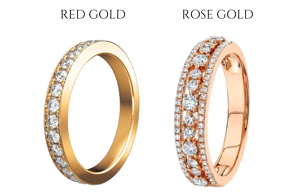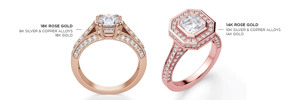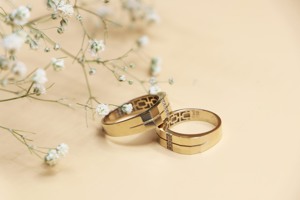Tavex uses cookies to ensure website functionality and improve your user experience. Collecting data from cookies helps us provide the best experience for you, keeps your account secure and allows us to personalise advert content. You can find out more in our cookie policy.
Please select what cookies you allow us to use
Cookies are small files of letters and digits downloaded and saved on your computer or another device (for instance, a mobile phone, a tablet) and saved in your browser while you visit a website. They can be used to track the pages you visit on the website, save the information you enter or remember your preferences such as language settings as long as you’re browsing the website.
| Cookie name | Cookie description | Cookie duration |
|---|---|---|
| tavex_cookie_consent | Stores cookie consent options selected | 60 weeks |
| tavex_customer | Tavex customer ID | 30 days |
| wp-wpml_current_language | Stores selected language | 1 day |
| AWSALB | AWS ALB sticky session cookie | 6 days |
| AWSALBCORS | AWS ALB sticky session cookie | 6 days |
| NO_CACHE | Used to disable page caching | 1 day |
| PHPSESSID | Identifier for PHP session | Session |
| latest_news | Helps to keep notifications relevant by storing the latest news shown | 29 days |
| latest_news_flash | Helps to keep notifications relevant by storing the latest news shown | 29 days |
| tavex_recently_viewed_products | List of recently viewed products | 1 day |
| tavex_compare_amount | Number of items in product comparison view | 1 day |
| Cookie name | Cookie description | Cookie duration |
|---|---|---|
| chart-widget-tab-*-*-* | Remembers last chart options (i.e currency, time period, etc) | 29 days |
| archive_layout | Stores selected product layout on category pages | 1 day |
| Cookie name | Cookie description | Cookie duration |
|---|---|---|
| cartstack.com-* | Used for tracking abandoned shopping carts | 1 year |
| _omappvp | Used by OptinMonster for determining new vs. returning visitors. Expires in 11 years | 11 years |
| _omappvs | Used by OptinMonster for determining when a new visitor becomes a returning visitor | Session |
| om* | Used by OptinMonster to track interactions with campaigns | Persistent |
| Cookie name | Cookie description | Cookie duration |
|---|---|---|
| _ga | Used to distinguish users | 2 years |
| _gid | Used to distinguish users | 24 hours |
| _ga_* | Used to persist session state | 2 years |
| _gac_* | Contains campaign related information | 90 days |
| _gat_gtag_* | Used to throttle request rate | 1 minute |
| _fbc | Facebook advertisement cookie | 2 years |
| _fbp | Facebook cookie for distinguishing unique users | 2 years |
Everything You Need To Know About Red Gold And Rose Gold

Rose gold and red gold jewellery get their typical colour from a proportion of copper that is added to the alloy in varying amounts. The higher the copper content, the more intense the reddish colour. Red gold contains a higher proportion of copper and therefore has the special rust-red colour, which is very similar to copper. In addition to the colour shade, copper gives the red gold alloy extra hardness and strength.
Rose gold is a particularly noble variant of red gold that usually has the proportions 75% fine gold, approx. 20% copper and approx. 5% silver. Rose gold is often simply called red gold. The proportion of copper and silver in rose gold is lower than in most other varieties of red gold, and the proportion of fine gold, which determines the value, is correspondingly slightly higher.
Reddish gold works particularly well with tanned skin tones, where the contrast is at its most noticeable.
Want to see more of Tavex investment gold? Click here!

Rose gold and red gold share similar colour tones, but they differ in composition and shades of red.
Rose gold is a gold alloy that usually contains about 75% pure gold, 20-25% copper and a small amount of silver. The copper level gives it a pink or rose-like colour, hence the name “rose gold.” The silver in the rose gold helps balance the colour and creates different shades, from subtle pink to a deeper pink.
On the other hand, red gold has a higher copper content, giving it a more intense colour similar to copper or maroon. The typical composition of red gold includes about 50-75% pure gold and 25-50% copper, with little or no silver content. The higher proportion of copper gives a stronger red colour.
Both rose gold and red gold have gold alloys with a reddish hue, but they have different compositions and therefore show distinct shades of red. Rose gold tends to have a lighter, pink hue due to its balanced mix of copper and silver, while red gold has a stronger, reddish-brown colour due to its higher copper content. Both are beautiful options for jewellery and add a unique touch to your style statement. Which one you choose depends on your personal taste and which shade of red you prefer for your jewellery.
Can you tell the difference between red gold and rose gold?

With red gold, you can create fine shades of red by varying the individual components. If copper is the main component of the red gold alloy, the material takes on a deep rust-red colour. 333 red gold contains, for example, 33.3 percent fine gold and 66.7 percent copper. Red gold takes on a more orange-gold colour when the fine gold content is higher than 585.
Remember that red gold or rose gold is not standardised and comes in a variety of varieties. Therefore, there are jewellery that have many different shades of copper-red.
Rose gold is considered to be gold that, due to its gold alloy, has a colour spectrum that ranges from silvery cool pink to a warm apricot hue. The characteristic reddish hue of noble 750 rose gold is achieved by an alloy of 75 percent fine gold, 20.5 percent copper and 4.5 percent silver.
Both red gold and rose gold are generally found with a gold content of between 33.3 percent and 75 percent . 333 rose gold is the cheapest alloy. As you can see, there is no exact definition based on the composition, so it is always advisable to pay attention to the exact details of the gold content, because high quality 750 gold also facilitates a possible resale.
If the copper content is too high, the material properties deteriorate and the red gold alloy tends to oxidise and discolour.
Should I choose yellow gold or red gold?
Whether you prefer to wear a diamond ring in red gold or jewellery in yellow gold or white gold is simply a matter of personal taste. 750 red gold is as valuable and durable as 750 yellow gold, the decisive factor for the price is the content of fine gold. Problematic metals such as nickel are no longer found in the gold varieties sold today and can at most be found in antique jewellery. Notice in the image below that the less gold there is in the jewellery (less amount of Karat), the more copper there is in the ring, which affects the colour.

Advantages and disadvantages of rose gold and red gold
When it comes to choosing the perfect gold for your jewellery, rose gold and red gold offer different options. Both materials have their own advantages and disadvantages that are good to know before deciding which one to choose.
Advantages of rose gold:
- Romantic and elegant: Rose gold’s soft and warm pink hue exudes romance and elegance, making it a popular choice for engagement rings and other symbolic jewellery.
- Versatile and complementary: Rose gold complements a wide range of skin tones and adds a touch of sophistication and femininity to any outfit.
- Resistant to oxidation: Rose gold is resistant to oxidation, which means that it retains its shiny surface for a longer period of time.
- A modern trend: Rose gold has seen an increase in popularity in recent years, making it a contemporary and fashion-conscious choice for those seeking a unique and stylish look.
Disadvantages of rose gold:
- Limited availability: Rose gold is rarer than other gold alloys, which can result in higher prices compared to traditional yellow gold.
- Sensitivity to certain skin tones: Although rose gold generally suits different skin tones, it may not be as suitable as other gold colors for some individuals. However, this is entirely down to personal taste.
- Not a pure shade of gold: Many enthusiasts of gold jewellery prefer classic yellow or white gold, as rose gold deviates from the traditional shade of gold.

Advantages of red gold:
- Stands out: The rich reddish hue of rose gold makes a subtle impression and sets it apart from other gold varieties and offers a unique look. The rarity and special appearance of red gold enables the creation of unique jewellery that stands out from the crowd.
- Harder material: The higher copper content in red gold provides extra durability and strength, making it less susceptible to scratches and wear.
Disadvantages of red gold:
- Skin sensitivity: Individuals with copper allergies should be careful when wearing red gold, as the higher copper content can cause skin irritation.
- Limited use: Due to its intense colour, red gold can be less versatile and more difficult to match with certain gemstones, outfits and skin tones.
Ultimately, the choice between rose gold and red gold comes down to personal preference and the purpose of the jewellery. Both varieties offer fine options for those seeking distinctive and unusual jewellery that reflects their individuality. Whether you choose the romantic appeal of rose gold or the elegance of red gold, these unique gold colors are sure to make an impression.
Are there any red or rose gold coins?
Yes, sovereigns! Historically renowned as gold coins circulated in the United Kingdom and other parts of the British Empire, are often admired for their unique reddish hue. This distinct coloration arises due to the presence of copper in the alloy from which the coin is minted. Pure gold is naturally yellow, but when alloyed with other metals, its hue can change.
The incorporation of copper into gold not only hardens the metal, making it more durable for circulation, but also imparts a reddish tint. This combination of metals gives sovereigns their characteristic appearance, which is often referred to as “red gold.” Over time, as minting practices evolved and other metals were used in varying amounts, the exact shade of sovereigns could differ, but the classic red gold appearance remains emblematic of the coin’s rich history and its copper consistency.
 Out of stock
Out of stock
Frequently asked questions about rose gold and red gold
- Are rose gold and red gold hypoallergenic? Both rose gold and red gold can cause allergic reactions in some individuals, especially those who are sensitive to copper. If you have experienced allergic reactions to copper in the past, you should be careful about wearing rose gold or red gold jewellery. If you are unsure how your skin is reacting, it is best to consult a dermatologist or jeweller for advice.

- Which is more valuable, rose gold or red gold? The value of both rose gold and red gold depends mainly on the gold content of the alloy. The higher the gold content, the more valuable the piece of jewellery. Since both rose gold and red gold can have different gold contents, there is no general rule as to which is more valuable. It is best to check the gold content and any other precious metals in the jewellery to determine its value.
- How can I be sure that my jewellery is made of real rose gold or red gold? To ensure that your jewellery is made of real rose gold or red gold, look for a stamp that shows the gold content of the jewellery. In Sweden, stamps are used that indicate the gold content and authenticity of the jewellery. Common stamps for rose gold are “750” or “18K”, indicating 18 karat gold. For red gold, stamps such as “585” (14K) or “750” (18K) can be used. If in doubt, visit a trusted goldsmith or gem expert who can confirm the jewellery’s authenticity. At Tavex , we help private customers buy and identify gold!
- How can I avoid allergic reactions to rose gold and red gold? If you have a history of allergic reactions to copper or other metals, it is best to choose jewellery with a higher gold content, as these usually contain less copper. Alternatively, you can choose jewellery in other precious metals that are less likely to cause allergic reactions, such as platinum or palladium. If you already wear rose gold or red gold jewellery and experience irritation, remove the jewellery immediately and consult a dermatologist for advice.
In conclusion, both rose gold and red gold offer an enchanting array of hues that stem from their unique alloy compositions. The differing percentages of copper in the blend not only determine their distinct shades but also influence their properties, advantages, and potential for allergic reactions. Each variant resonates with history, artistry, and personal expression, embodying beauty beyond the mere gleam of precious metal. Whether it’s the tender romantic allure of rose gold or the deep, timeless allure of red gold, these metals hold a special place in the realm of jewellery. Their value goes beyond monetary worth; it extends to the memories, moments, and stories they help forge. With a legacy that spans coinage like the sovereigns to intricate jewellery pieces, these reddish golds enchantingly bind the past, present, and future in a golden embrace.

















